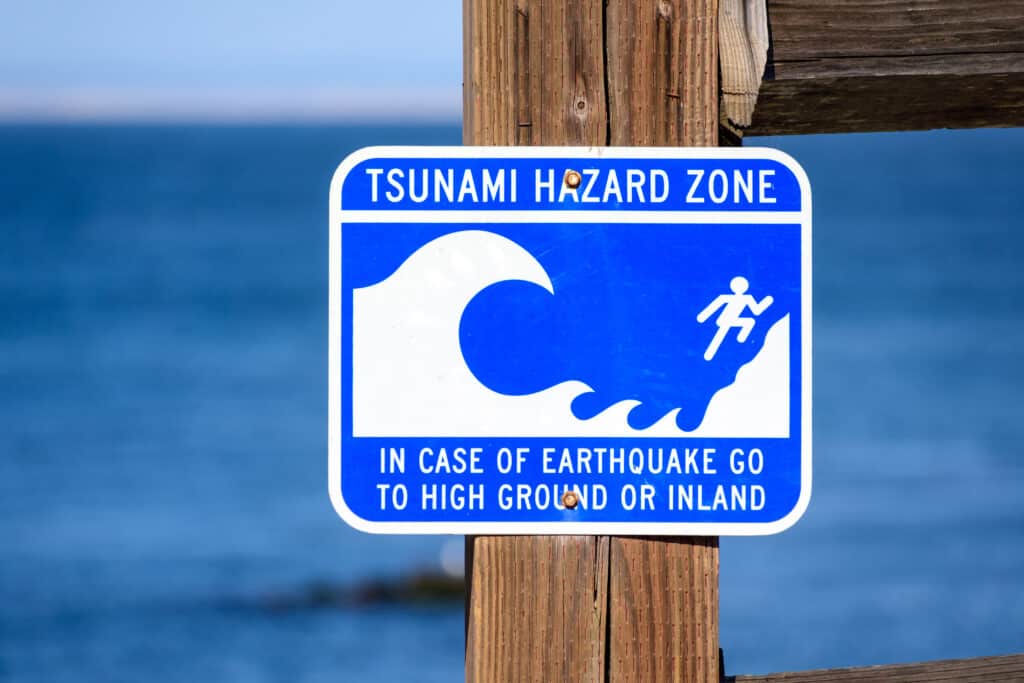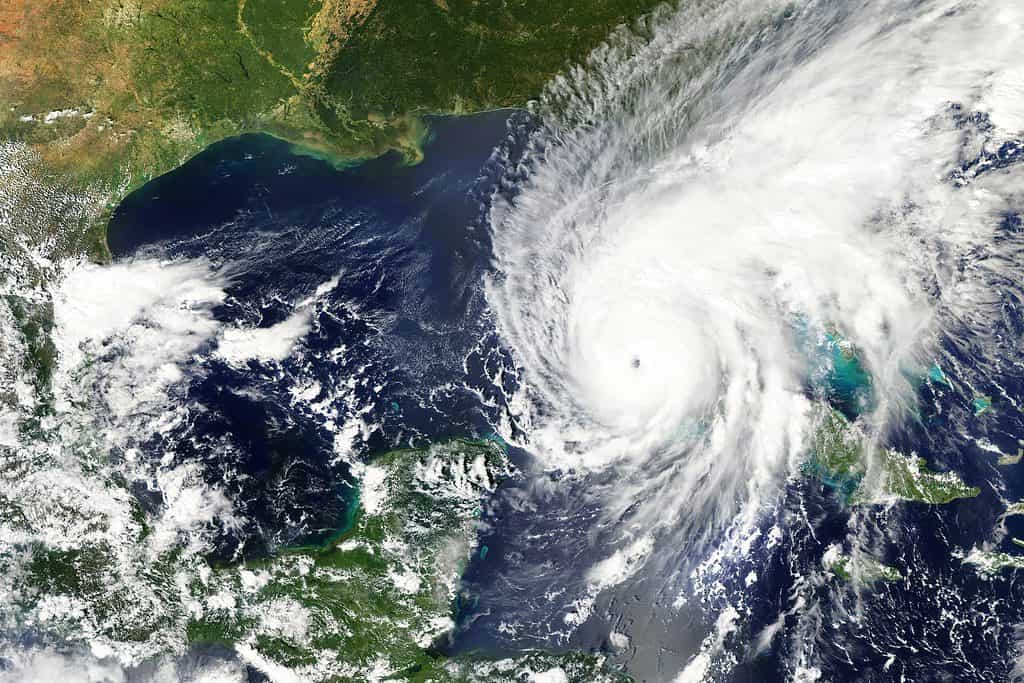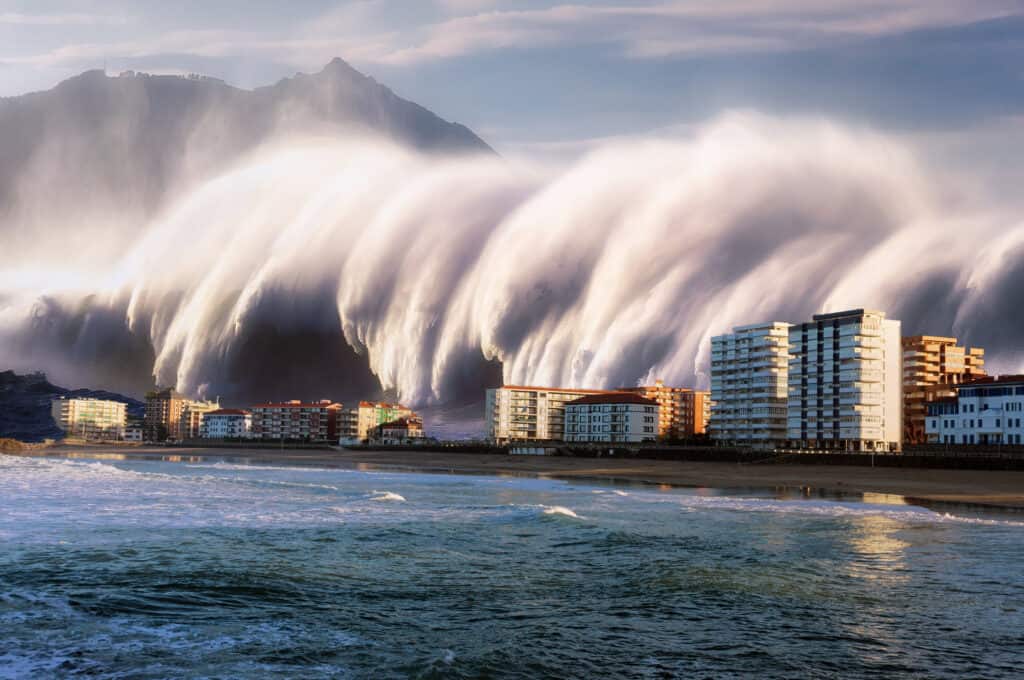Hurricanes and tsunamis are both water-based natural disasters, but they aren’t the same thing. In fact, besides being related to water and causing a lot of destruction, there really isn’t a lot that is similar between the two! Today, we are going to take a look at these two natural disasters, a Tsunami vs Hurricane, and find out what makes them different. Let’s get started.
Comparing a Tsunami and a Hurricane

Tsunamis and hurricanes are both severe
natural disasters
but are distinctly different from one another.
©Michael Vi/Shutterstock.com
Hurricanes and tsunamis are both natural disasters that can cause significant destruction, but they differ in their causes, characteristics, and impacts.
Hurricanes are tropical storms that form over warm ocean waters and can produce high winds, heavy rains, and flooding. They are most common in the Atlantic and Pacific Oceans, and can be predicted days in advance, giving people time to prepare or evacuate. Also, hurricanes can be seen through satellite imaging and last for days at a time. When they do make landfall, they are able to travel across land until they run out of energy from leaving the water and can cause damage in a much broader area than a tsunami can do to their sheer area impacted by the storm.
In contrast, tsunamis are a series of ocean waves that are caused by underwater disturbances such as earthquakes, volcanic eruptions, or landslides. They are more common in the Pacific Ocean and can move at extremely high speeds, often with little warning. When tsunamis make landfall, they can cause massive waves that sweep over heavily populated areas suddenly. The suddenness at which a tsunami can occur can catch people by surprise and can kill many, especially when they are large.
Cause

Hurricanes are caused by
warm water
around the equator and ideal storm conditions.
©lavizzara/Shutterstock.com
A hurricane is caused by a combination of warm ocean waters, moisture, and wind that are most often formed around the water near the equator. Hurricanes typically form in the Atlantic and Pacific Oceans during the warm months of the year when sea surface temperatures are at their highest. As warm, moist air rises from the ocean surface, it creates an area of low pressure. This area of low pressure then draws in more warm, moist air, which rises and cools, forming clouds. As the clouds continue to grow and swirl, they create winds that pick-up energy and speed until they can be classified as a hurricane.
Tsunamis are waves of energy traveling through water that is usually caused by underwater releases of energy through events like earthquakes, volcanic eruptions, or tectonic activity. When these events occur, a wave can form and travel until it hits a coastline, causing immense damage.
Speed
A hurricane moves relatively slowly, with speeds of up to 20-30 mph, while a tsunami can move at speeds of up to 500 mph. Hurricanes are more storm-like in their movements, while a tsunami is a wave of energy.
Size
A hurricane can range in size from a few hundred miles to several thousand miles in diameter, while a tsunami typically affects a much smaller area, usually less than a mile or two across.
Regional Impact

Tsunamis often have huge waves and subsequent flooding.
©Mimadeo/Shutterstock.com
A hurricane is a storm that produces heavy rain and flooding, while a tsunami is a series of ocean waves that can cause severe flooding. The winds from a hurricane can blow things away and cause severe damage, just like a tornado. Tsunamis cause damage from the impact of the water and the subsequent flooding that occurs after.
Waves
In a hurricane, the waves are primarily wind-driven and generally do not reach heights higher than 30 feet, while in a tsunami, the waves can reach heights of over 100 feet, depending on the energy source that caused it.
Warning time

Hurricanes are monitored over the course of days, while tsunamis are caused and hit within a span of hours or minutes.
©Everett Collection/Shutterstock.com
A hurricane can be predicted days in advance, giving people time to prepare or evacuate, while a tsunami warning may only be issued minutes before it hits. When hurricanes are spotted, they are often tracked and models that show their paths are monitored. If they are expected to make landfall, evacuation announcements are sent out. Tsunamis are much more random, and there are often evacuation announcements, but they are sent in much shorter timeframes, sometimes minutes.
Occurrence
Hurricanes are most common in the Atlantic and Pacific Oceans, while tsunamis are more common in the Pacific Ocean. Hurricanes can pretty much occur anywhere there is warm water and the right conditions, making them a seasonal occurrence, less a regional one. Tsunamis are more common in the Pacific because of the increased tectonic activity from the plates in the region.
Duration
A hurricane can last for several days, while a tsunami may only last a few hours as the wave hits and then flooding recedes. Hurricanes last longer when they are above water and have a reduced lifespan when over land.
The photo featured at the top of this post is © LiL SUS/Shutterstock.com
Thank you for reading! Have some feedback for us? Contact the AZ Animals editorial team.






